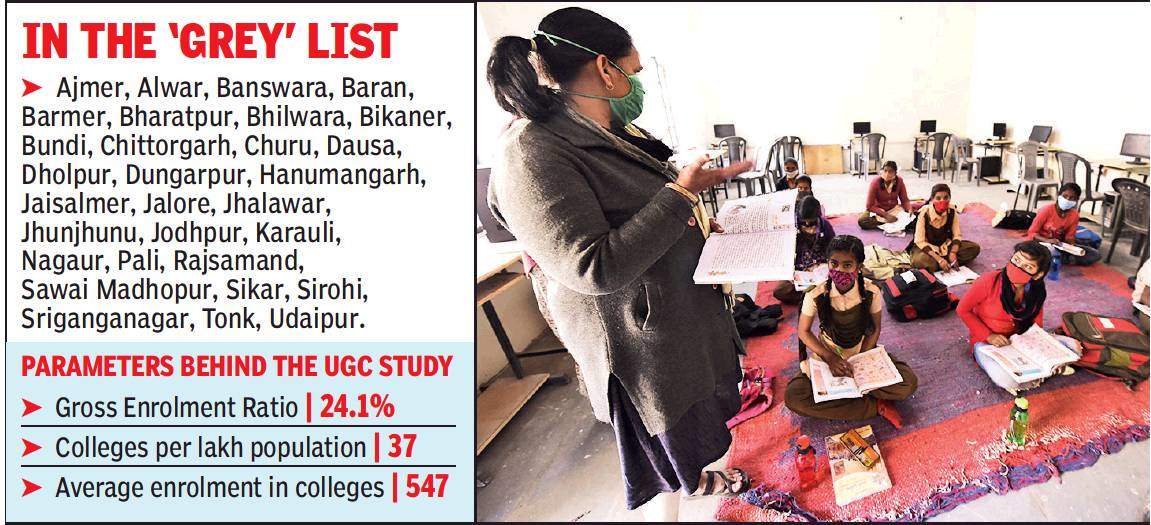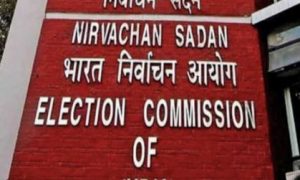JAIPUR: The Centre has listed 30 districts of Rajasthan under the educationally backward districts (EBD), thus demolishing the claims made by the state as an emerging education hub in the country.
Rajasthan is the only state whose 90% of districts have appeared in the ‘grey’ list of education.
Three districts — Jaipur, Kota and Pratapgarh did not feature in the list of the EBD.
The list, submitted by the ministry of education in Parliament recently, is based on the survey report by the University Grants Commission (UGC). The figures come on the contrary with the state reports claiming that 12-16 districts in the state are matching the national benchmark in terms of 12 parameters.
The report by the UGC was made on the Gross Enrolment Ratio (GER) in which the state was ranked 24th in the latest report of 2019-20, colleges per lakh population and average enrolment per college.
The state’s GER was 24.1%, while the national average was 27.1%. The GER is defined as the percentage of the population in the age group of 18-23 enrolled in any of the higher education institutes.

The report also comes contrary to the fact that the state has the highest number of 89 universities and the fourth-highest number of 3,380 colleges in the country. The figure of 37 colleges per lakh is also better than the national average but still, 90% of the districts have failed the match the national average.
“The assessment based on three parameters is unfair for the biggest state like Rajasthan. Here the population is scattered and sparsely distributed making it difficult for the transition from schools to colleges. The enrolment of women in the state has traditionally been poor leading to the overall decline in the GER and lastly, the high rate of migration among the families especially youths make it obvious to lower down the GER,” said Puneet Sharma, an expert on higher education.
Pointing out the mistakes of the government, Damodar Goyal, an educationist said faulty planning by the consecutive governments is leading to the present situation. “The report indirectly pointed out where the state stands on the scale of quality of education? Despite having an upper edge on the number of colleges and universities your 30 districts adjudged EBD means the absence of concrete planning at the helm of affairs in the education sector,” Goyal.
A senior higher education department official requesting anonymity said that calling 30 districts backwards is whitewashing the efforts of all stakeholders.
Technical education minister Subhash Garg said some surveys had given us positions in top three while others put us in top 10.
“I would not like to comment on this particular reference to report since I don’t know the parameters they have considered. Prime facie it sounds contrary,” he said.
“The picture doesn’t seem to be real. Ideally, the survey should have accounted for the GER of schools in which the state has made significant gains. Barely 12-16 districts which accounted for about 60-80 rural space are falling behind in important parameters also due to geography, rural-urban divide and poverty,” said the official.



































